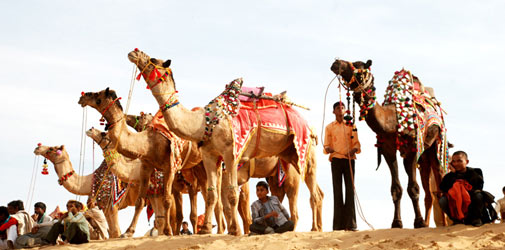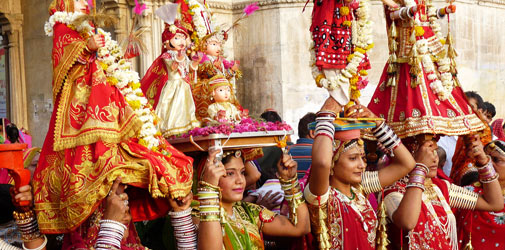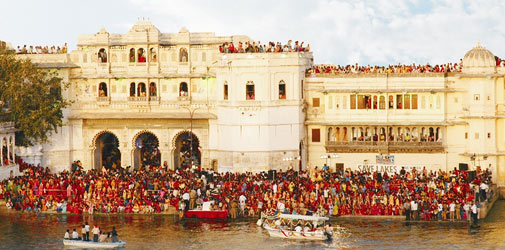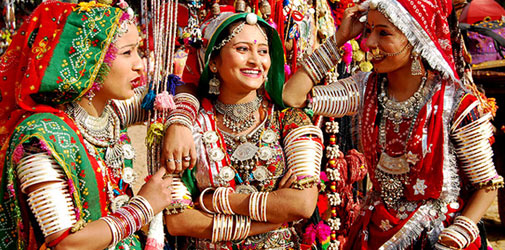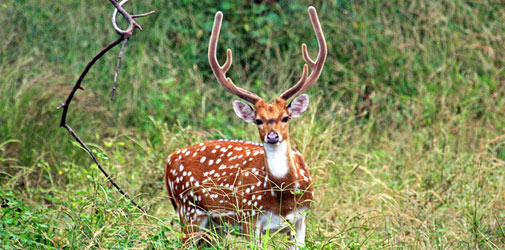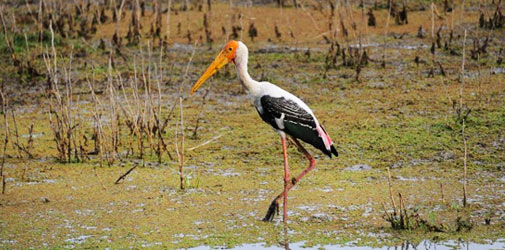Customs and Traditions
A number of faiths and religions have emerged in India and exist simultaneously. India is a country with “Unity in Diversity”. With 28 states and seven union territories, India is a host to many languages, religions and cultures. This diverseness in culture makes India a unique country in the world with an array of different customs and traditions. Traditions and rituals in India have become an integral part of everyday life. Customs of India are a major attraction for tourists coming here from round the globe. Right from birth to death, an Indian keeps on performing various customs and traditions. Almost every occasion in India has a ceremony attached to it. Some of the Indian customs are listed herein. Read on.
Traditional Welcome
Indians believe in the phrase “Atithi Devo Bhava”, meaning a guest is the reflection of God. In the traditional welcome, the guest is garlanded and a tikka (vermillion) is put on his/her forehead. The “Atithi Devo Bhava” campaign has been launched by the Tourism Ministry of India to make people aware of India’s rich culture and traditions.
Namaskar/Namaste
The most popular form of greeting, especially the elders, is to say Namaste with hands joined at the chest level. This is the traditional Indian style of greeting or parting ways. Despite being a day-to-day ritual, this greeting holds great religious / spiritual significance. The touching of the two palms connotes bringing together the two extremities – the feet of the Divine and the head of the devotee.
Prostrating Before Parents and Elders
Indians prostrate before their parents, elders, teachers and noble souls by touching their feet. The elders, in turn, place their hand on the prostrating person’s head and bless him/her. The act of prostration is carried out on a daily basis and specially on important occasions, such as commencement of a new task, birthdays, festivals, wedding, and so on. Prostration is done to display respect for the age, maturity, nobility and divinity of our elders.
Fasting
Observing fast forms another significant part of the cultures and traditions followed in India. While keeping a fast, one has to abstain himself/herself from consuming food or drinks or both. The period of fasting varies from occasion to occasion and religion to religion. Shivratri, Navratri and Karva Chauth are some Hindu festival fasts, though Hindus observe fast on specific days for varied reasons. On the other hand, Muslims observe fast during the holy month of Ramadhan, where they abstain from eating and drinking anything from dawn to dusk.
Henna
Application of henna, or mehndi, is symbolic to celebration of an occasion or festival in India. Beautiful henna designs are applied on hands and feet on special occasions, like weddings, religious functions, and Muslim festivals, namely, Eid-ul-Fitr and Eid-ul-Azha. Also, women and girls apply henna on Hindu festivals, such as Karva Chauth, Diwali, Bhaidooj and Teej.
Garlanding
As an integral part of the cultures and rituals practiced in India, Indians enjoy playing host to the guests, whether local or international. Thus, to make their guests feel at home, they to the extent of offering garlands, signifying two important reasons. Firstly, by doing so, they display their happiness at receiving the guest and secondly, it is a public acknowledgement of the guest’s importance. Besides, the act of garlanding is observed on religious ceremonies, like weddings and festivals. Different kinds of garlands are prepared for various occasions. Garlands, made of red roses and white jasmine, are used in weddings where the bride and groom garland each other. On such auspicious occasions, garlands made by weaving currency notes are also adorned by the groom.
